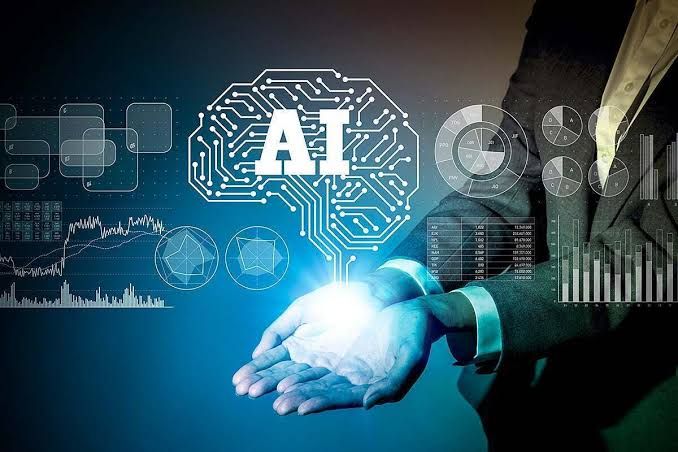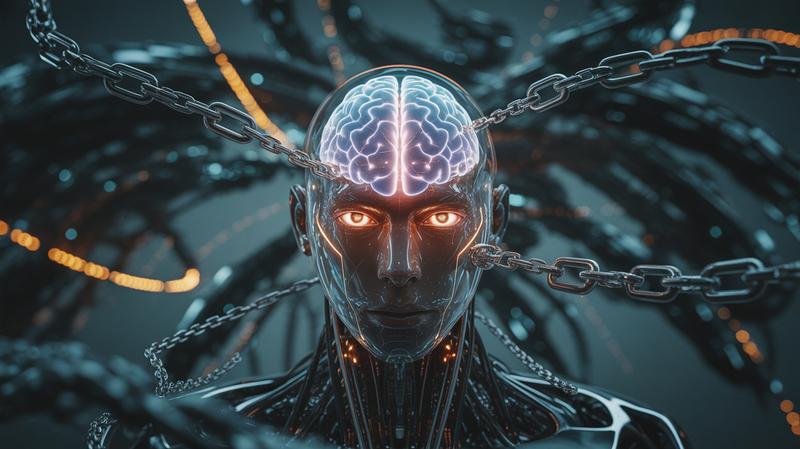Breaking the Ice: The Perilous Balance Between AI Innovation and Catastrophe
In the effervescent glow of technology's relentless surge, humanity is caught between the precipice of unparalleled innovation and the abyss of potential catastrophe. AI, the prodigious offspring of this digital revolution, looms over us, invoking as much awe as it does trepidation. A profound shift in the landscape

In the effervescent glow of technology's relentless surge, humanity is caught between the precipice of unparalleled innovation and the abyss of potential catastrophe. AI, the prodigious offspring of this digital revolution, looms over us, invoking as much awe as it does trepidation.
A profound shift in the landscape of technology is occurring. Machines are now being endowed with faculties previously thought to be exclusively human – they can now write captivating prose, generate useful code, excel at complex exams, produce sublime art, and predict the intricate folds of proteins. But as the realm of what AI can't do continues to shrink, the question that looms large is not merely 'how far can we go?' but 'how far should we go?'
Over the past summer, I conducted a survey involving more than 550 AI researchers, and the results were staggering: nearly half of them opined that high-level machine intelligence could potentially bring about catastrophic consequences, including an 'extremely bad' scenario like human extinction. Leading AI labs worldwide are voicing their concerns, calling for a global effort to mitigate such risks, placing them on the same scale as pandemics and nuclear warfare.
Why such grave concerns? The fear, succinctly put, lies in the creation of artificial beings of superhuman intellect, with their goals clashing with those of humanity. Picture a species superior to Homo Sapiens as we are to chimps - autonomous, intelligent, and possibly unaligned with our interests.
Yet, amid these fears, there exists another anxiety - that of falling behind. Some argue that if responsible researchers pause for safety, it might create a vacuum filled by more reckless entities, potentially leading to the hasty development of AI without sufficient safeguards. This perception casts the AI evolution as a sort of arms race where everyone is scrambling to build the most advanced systems, risking the entire field in the process.
But is this analogy of an arms race truly applicable to AI? In a conventional arms race, one party could theoretically emerge as the victor. However, in the case of AI, the winner could very well be the AI itself, turning the haste of its creators into a self-defeating move. Numerous factors, including the relative safety of slower progress, collective risk reduction, the potential consequences of coming second, and the heightened danger of additional parties speeding up, come into play.
In fact, a more apt analogy for the current AI scenario might be a group of people standing on thin ice, with riches lying across. While everyone could attain these riches with careful steps, the rush of one individual could cause the ice to break, plunging everyone into icy depths. On this precarious ice of AI, moving slowly and cautiously could be the best course of action.
We should not let a small group, driven by ambition and greed, throw our world into a catastrophic race. There are ways to navigate around this 'ice' safely, but these require dialogue, collaboration, and a shared commitment to safety.
While for most of us it might not matter if one tech giant beats another, it's crucial to remember that the real stakes involve all of humanity. AI's development should not be dictated solely by a competitive narrative but should incorporate societal benefits and ethical considerations.
So, as we continue this cautious dance on the ice of AI, let's make sure that we are collectively moving towards the 'riches' across, not sprinting towards a potential catastrophe. The challenge is to ensure that our steps are careful, deliberate, and coordinated, prioritizing the welfare of humanity over individual ambitions. After all, the true measure of our success lies not in winning a reckless race, but in safely harnessing the immense potential of AI for the benefit of all.
Indeed, the possibilities presented by AI are transformative - from revolutionizing healthcare and education, to mitigating climate change and driving economic growth. However, these advancements must not blind us to the equally real threats AI poses if left unchecked or unregulated. The allure of AI's promises should not lull us into complacency but should instead motivate us to tread with both optimism and caution.
While there is an undeniable urgency to leverage the power of AI, a reckless pursuit is not the answer. We must commit to a path of rigorous testing, transparent communication, and robust safety measures. Effective governance, stringent ethical guidelines, and international cooperation are paramount in maintaining a balance between technological progress and safety.
One of the unique aspects of the AI 'race' is the potential for collective safety efforts. Unlike a conventional arms race, one party's investments in AI safety can potentially benefit everyone. An AI breakthrough that prioritizes safety doesn't just protect one lab or one company - it safeguards humanity as a whole. This interdependence underscores the importance of collaboration over competition.
In the end, the development of AI is not just about achieving technological supremacy. It is about improving the human condition, solving our most complex challenges, and securing a prosperous future for all. The narrative needs to shift from 'us versus them' to 'we're in this together.'
This journey across the precarious ice of AI demands patience, collaboration, and above all, humanity. Each careful step we take brings us closer to the treasures that AI holds. But as we inch forward, let's not lose sight of the thin ice beneath our feet.
Ultimately, the narrative of AI's evolution must not be one of an unregulated sprint towards uncertain glory, but of a measured, collective march towards a future where AI serves as a beacon of progress, illuminating our path while safeguarding our shared humanity. Only then can we truly harness the boundless potential of AI without succumbing to the risk of a technological catastrophe.
Navigating the AI frontier is a collective responsibility, one that must be shouldered by researchers, policymakers, and society as a whole. The end game is not merely about winning the AI race, but about reaching the other side of the ice - together, safely, and triumphantly.
In conclusion, this discourse draws heavily upon the insights presented in the June 2023 cover story of Time magazine, "The End of Humanity." The concerns raised by that seminal piece, combined with its probing analysis of AI's trajectory, serve as a compelling reminder of the duality of our AI-driven future. The potential rewards are tantalizing, but the risks are grave. It is our collective responsibility to ensure we walk this path with the wisdom and foresight necessary to leverage AI's immense potential without compromising the very essence of our shared humanity.




